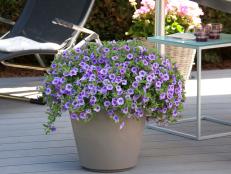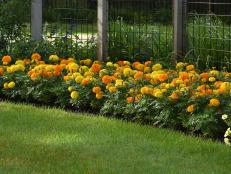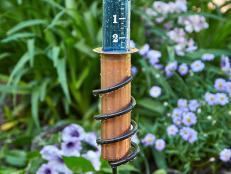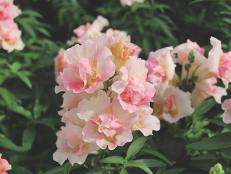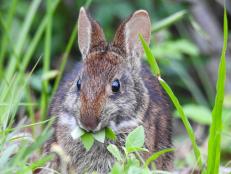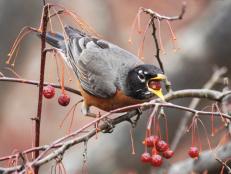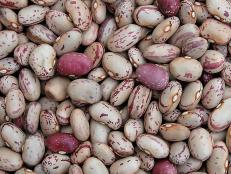Deer-Resistant Annuals

Cleome combines an odor and thorns to make it unpalatable to deer.
Give deer the brush off by planting deer resistant annuals. While there’s no such thing as a deer proof annual, you can stock your garden with plants these four-footed munching machines generally dislike. Just remember that when natural food is scarce, like during a drought or early in the growing season, deer may find your garden more tempting than usual. In these times, even deer resistant annuals might prove palatable to a hungry deer.
Some deer resistant annual flowers serve up leaves with a bristly texture that delivers a nasty texture to a hungry deer mouth. Heliotrope, with its richly perfumed blooms, has a hairy, almost sandpapery leaf that deer don’t usually nibble. Sunflower and zinnia also serve up a rough-textured leaf, as do gloriosa daisies (Rudbeckia hirta). Deer have been known to munch on sunflower seedheads, so if you’re raising sunflowers for the seeds, slip a mesh bag or other netting over flowers to protect them.
Persian shield (Strobilanthes) has a leaf texture deer avoid, along with Shirley poppies (Papaver rhoeas) and ageratum (Ageratum houstonianum), in all sizes. Tall verbena (Verbena bonariensis), with its willowy form and pretty purple blooms, adds an airy element to any planting. It’s a great annual to have in a garden because of its serendipitous self-sowing. A bonus is that it seems to be a deer resistant annual. In some Southern regions, tall verbena is becoming invasive in waterways, so be sure to investigate that potential in your area before adding it to your garden.
24 Deer-Resistant Plants 31 Photos
While no plant is completely deer resistant, our four-legged friends tend to shy away from plants that feature such unpalatable characteristics as bitter flavor, thorny stems, strong scent or unappealing texture.
Other deer-resistant annuals include the popular annual vines, morning glory and moonflower. Use these vines on a fence around a garden area with plants deer like, and you might discourage browsing. At the very least, you’ll have non-stop flowers ‘round the clock once vines start blooming.
Cool-season bloomers larkspur (Consolida), sweet William (Dianthus), snapdragon (Antirrhinum majus), sweet alyssum (Lobularia maritima) and lobelia (Lobelia erinus) all are reported to be deer resistant annuals. Heat-loving annuals that deer tend to ignore include lantana, Cosmos sulphureus, angel’s trumpet (Brugmansia) and summer snapdragon (Angelonia).
Plants with milky sap, like Diamond Frost-type euphorbia (Euphorbia graminea), are ones deer dislike, as are annuals with strong odors, like marigolds. Cleome (Cleome hassleriana) combines an odor and thorns to make it unpalatable to deer, while plants like strawflower (Helichrysum) have a coarse texture that deer leave alone.
Another fun deer resistant annual that is a star performer in the summer garden is four o’clock (Mirabilis jalapa). This time-telling bloomer adds a shrubby form to the garden and opens colorful flowers daily around 4 p.m. Two edible flowers that you can grow to grace your mealtimes — calendula and nasturtium — fall into the deer resistant annuals category. It’s not surprising that deer dislike nasturtium, with its peppery flavors.
Quite a few cutting flower favorites seem to fit the deer resistant annuals category, such as zinnia, Shirley poppy, larkspur, sunflower, tall ageratum and Verbena bonariensis, which makes having a cutting garden a strong possibility even when you’re wrestling with deer visiting your yard.








